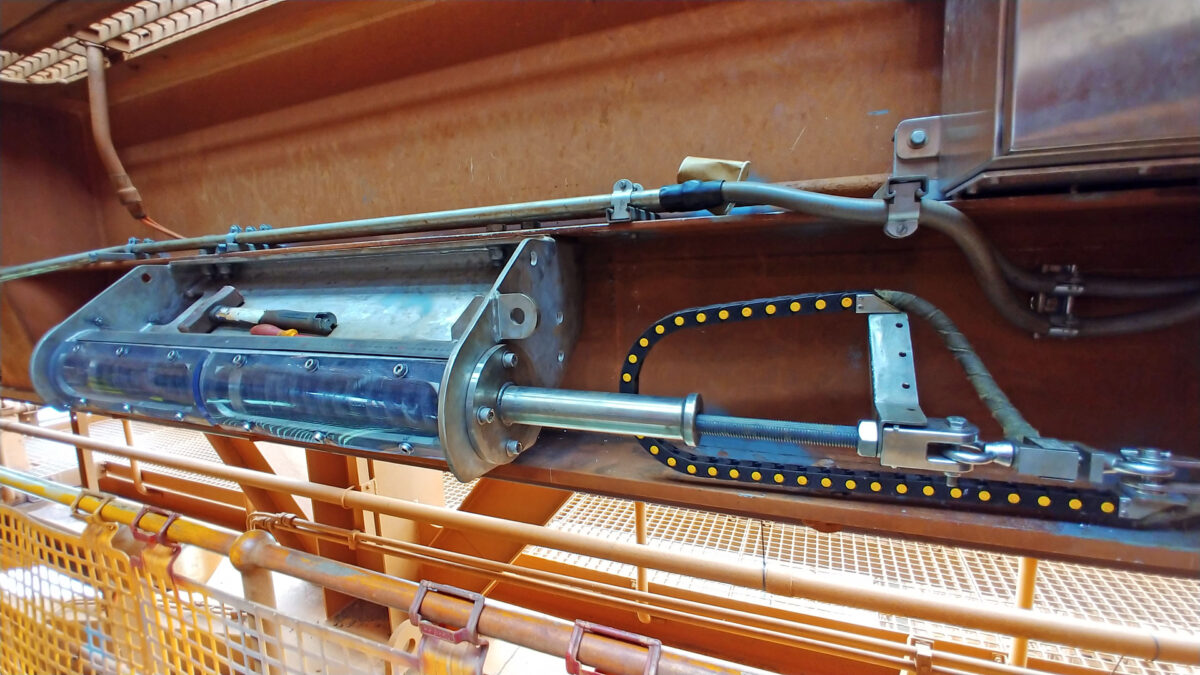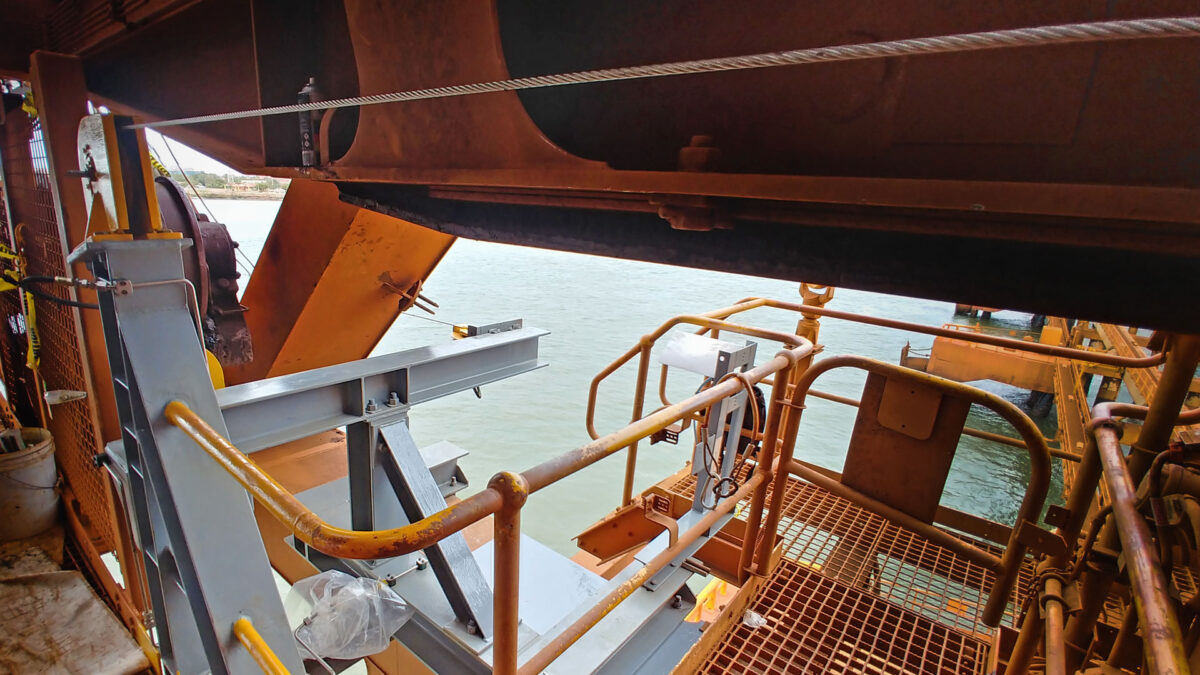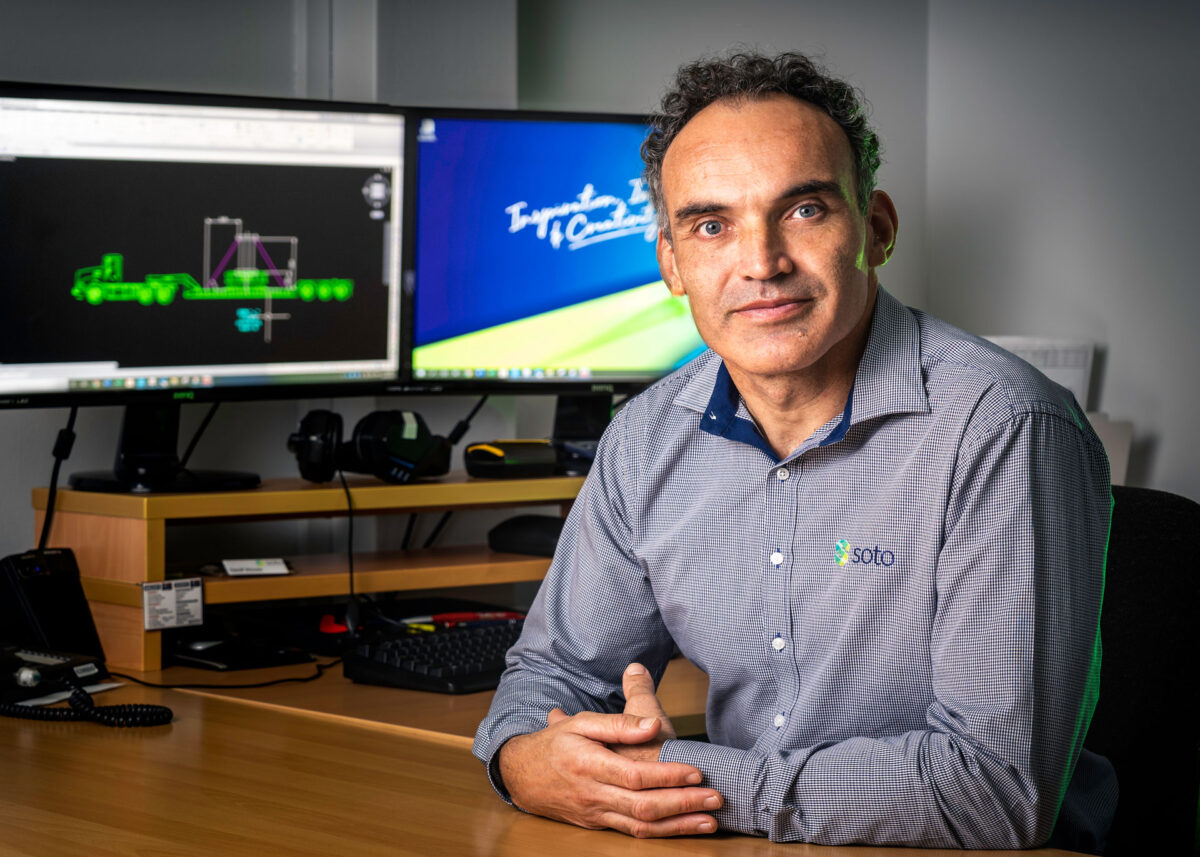customer story
BHP Port Hedland iron ore loader anti-collision system
SOTO engineers have provided a clever solution for preventing iron ore loaders from colliding with ships at berth, paving the way for fully autonomous loading operations.
BHP’s eight ship loaders in the Port of Port Hedland are the critical final step for its Pilbara iron ore operations. Five mines, four processing hubs and more than 1,000 kilometres of rail infrastructure drive upwards of 275 million tonnes per year of iron ore exports. The eight loaders can deliver 12,500 tonnes per hour each, and each ship can carry the equivalent of 47 Olympic-sized swimming pools of iron ore. Any downtime for a loader can cause significant efficiency problems in BHP’s operations.
While loading the ship, the ore is spread out over the vessel’s length and breadth, distributing the weight to avoid stressing its hull. This means the loader is moving alongside the ship frequently. To avoid a collision with the ship, loading operations consider winds, tides, swell, currents, and wake from other vessels.
While the chances of a collision are low, the consequences for human safety, damage, and costly downtime in operations are severe. To prevent collisions, light detection and ranging technology (LiDAR) detects obstacles to be avoided.

Iron ore ship loader at Port Hedland 
Iron ore ship loader installation detail, showing load cell unit 
Iron ore ship loader anti-collision system test lever. 
Iron ore ship loader installation detail, with pulley system and bolt-on support structure.
As part of a move toward the world’s first fully autonomous loading system, the loaders needed an improvement on the existing backup collision detection system. The current backup system is a wire rope suspended alongside the loader. The wire rope stretches when it contacts an obstacle, and at a calibrated tension, triggers an emergency stop.
A significant challenge was the fine tolerances required: over the 25-metre length of the boom, the 8-mm diameter wire rope needed to move a minimal distance to create sufficient tension (12kg) to trigger the load cell. This meant the existing system was unreliable and plagued with issues, such as expansion in the cable due to heat, dust covering sensors, and corrosion, causing the bearings and sheaves to seize, tripping the emergency stop.
The critical contact point on the outer end of the boom was effectively single use. Its rigid design rendered it inoperable with even a minor collision, leading to lengthy downtimes for repairs.
The SOTO solution
SOTO engineers looked in detail at each component of the system and addressed existing and potential problems, from the installation to commissioning, ongoing maintenance, and overall reliability. SOTO’s approach considers the entire system and understands its role and importance within a more extensive operation.
A vital feature of the design was addressing the issue of bent and damaged swingarms at the outer end of the boom. A bent swingarm reduces the contact distance between the boom and ship and puts strain on the wire rope that leads to unnecessary tripping.
The new swingarm contains a pivot mount, allowing it to move horizontally and vertically in contact with an obstacle. The movement is connected to limit switches that trigger the emergency stop. Counterweights return the swingarm to its original position when pressure is removed.

Value delivered
- Increased reliability and effectiveness of the anti-collision system, paving the way for ship loader automation
- Bolt-on design for quicker installation as well as reduced potential for fatigue from welding on the boom structure.
- Added access points for maintenance and incorporated capability for testing the swingarm during routine maintenance.
- The design considered the environment and conditions and included an automated lubrication system for pulleys and sheaves.
The client reported the successful commissioning and operation of the anti-collision system on one ship loader, with the likelihood of rolling it out across all eight Port Hedland assets.
“Geoff [Woods] and the rest of the SOTO team should be congratulated for their ‘everything engineered‘ approach, especially as this is one of the most important design aspects in achieving a world-first, fully autonomous operated ship loader machine. Thanks again to the SOTO design team! making a big difference in the Pilbara.”
Eugene Moreno, BHP




